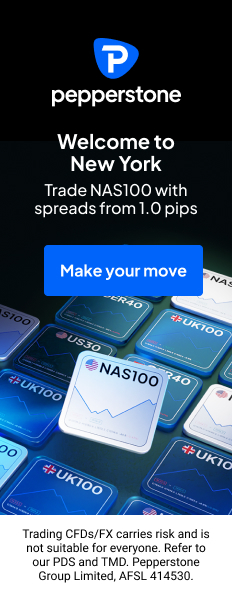The 2024 Bitcoin Mining Review, published in January with contributions from Digital Mining Solutions, highlighted that institutional capital was concentrating in CORZ, WULF, IREN, and HUT. These equities have generally outperformed the broader mining sector year-to-date.

That report identified three core dynamics:
1. Expanding institutional allocation to Bitcoin mining companies.
2. Heightened attention on AI and HPC-related strategies.
3. Preference for large-cap miners as primary investment vehicles.
With the release of new 13F filings, updated positioning can now be evaluated.
Continued Institutional Rotation
Among mining companies with market capitalizations above $100 million, most experienced growth in both the number of institutional holders and the aggregate value of invested capital, indicating sustained interest through the first half of 2025.
The most significant additions in institutional ownership occurred in IREN, CORZ, and APLD, each recording more than 40 new institutional holders. A common factor across these names is direct linkage to AI/HPC infrastructure:
- CORZ and APLD secured multibillion-dollar colocation agreements with CoreWeave.
- IREN has reported ongoing progress in GPU deployment and AI-ready infrastructure buildout, though without a headline HPC contract.
These developments reinforce AI/HPC as the primary institutional allocation driver in the mining space, signaling that data center monetization beyond Bitcoin remains a key thesis.
Distribution of Institutional Capital
The largest increases in institutional investment value were recorded in CORZ, MARA, and IREN, followed by CIFR and APLD.
MARA represents a distinct case within this group. Despite the absence of direct AI/HPC exposure, it attracted substantial inflows on the basis of scale advantages: it remains the largest publicly listed miner by both hash rate and Bitcoin reserves. The allocation pattern suggests that a segment of institutional capital continues to prioritize direct Bitcoin operating and treasury leverage. MARA previously held the top market capitalization in the sector but has since been surpassed by BMNR and IREN.
Uneven Institutional Participation
Not all mining equities experienced similar trends. BITF, HUT, and CAN recorded declines in institutional holders, while RIOT, CLSK, and CAN registered net reductions in invested institutional value.
- CAN reported the sharpest drawdown, with share prices down –65.60% YTD, aligning with decreased institutional activity.
- CLSK and BITF posted marginal gains (+4.99% and +6.17% YTD, respectively), but still underperformed relative to peers of comparable operational scale.
- HUT lost 13 institutional holders but maintained strong YTD returns. The divergence may indicate portfolio rotation, increased participation from non-institutional investors, or fund rebalancing rather than a deterioration in fundamental outlook. Notably, HUT has repositioned its business model toward energy infrastructure and established its compute division as an independent entity, American Bitcoin.
Another observation is that RIOT, CLSK, and BITF have all announced initiatives to expand into HPC. However, no energized capacity or confirmed commercial agreements have been reported to date, indicating a gap between strategic positioning and execution.
Institutional Ownership Percentages
Analysis of institutional ownership as a proportion of shares outstanding reveals distinct positioning patterns:
- High institutional penetration: CORZ (78.44%), CIFR (76.06%), and APLD (71.36%) lead the sector.
- Smaller-cap standout: BTBT shows 65.52% institutional ownership despite its size.
- Low ownership anomaly: BTDR, with a market capitalization exceeding $1 billion, records only 22.18% institutional participation.
While larger market capitalizations generally correlate with higher institutional ownership, outliers such as BTBT and BTDR demonstrate that visibility and narrative can be equally influential.
During Q2 2025, CIFR, BTBT, and IREN recorded the largest percentage increases in institutional ownership, coinciding with active promotion of HPC/AI strategies.
Key Shifts and Continuities
The latest data align with conclusions from the 2024 annual report:
- Institutional exposure to the mining sector continued to expand.
- Capital flows remained concentrated in larger-cap names.
- Within that group, miners with signed HPC contracts or active GPU deployment—specifically IREN, CORZ, CIFR, and APLD—captured the majority of new holders and allocations.
MARA remains the primary outlier: despite lacking an HPC strategy, it continues to attract substantial allocations due to its leading hash rate and Bitcoin reserves. By contrast, smaller-cap miners, non-HPC operators, and companies based outside the U.S. face ongoing challenges in securing comparable institutional participation.
Forward Considerations
For HPC-linked miners, the critical factor is execution—energizing capacity, scaling revenue, and delivering on contractual milestones will determine whether current institutional interest is sustained. For miners without established HPC exposure, differentiation requires a defined strategic narrative backed by operational data.
Companies with already elevated institutional penetration may face ownership ceilings due to limited float availability. Conversely, miners with lower current ownership but credible infrastructure and power capacity retain potential for re-rating if near-term catalysts emerge.
Overall, institutional capital has shown clear directional preferences, but sector positioning remains fluid. Performance over the next several quarters will determine leadership outcomes.
Methodology and Limitations
This analysis is derived from aggregated 13F filings as of June 30, 2025. Reported figures reflect long equity positions disclosed by U.S. institutional filers and exclude derivatives, swaps, and most non-U.S. participants. Because 13F data are retrospective, reported positions may differ materially from current institutional exposure levels.
Learn from market wizards: Books to take your trading to the next level


 Hot Features
Hot Features














